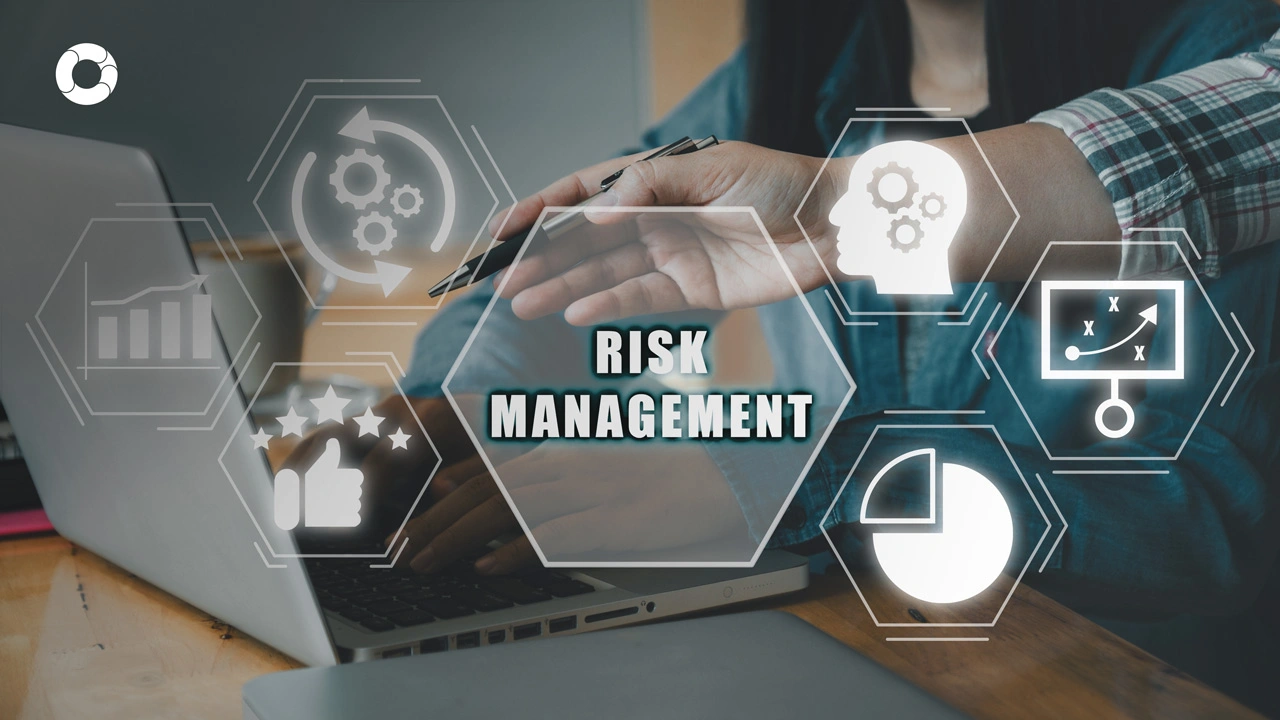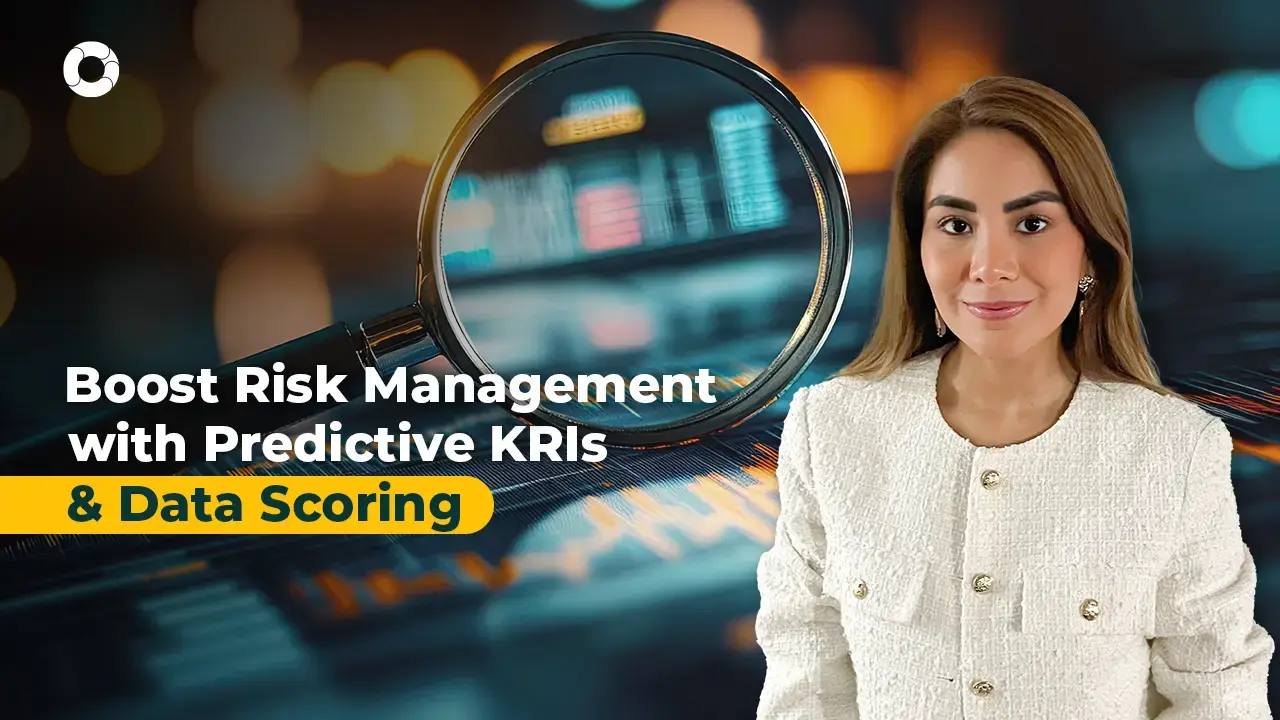What you need to know about Key Risk Indicators

Facing business risks is inevitable in running any organization, but minimizing them is vital to success. In today's uncertain business environment, it is crucial to have a comprehensive approach in place to identify and manage risks effectively. This is where Key Risk Indicators (KRIs) come into play.
This article will dive deep into KRIs, exploring their significance in risk management and how they can help businesses mitigate potential risks. Understanding and monitoring the correct set of KRIs can provide valuable insights and early warning signs, whether financial, operational, or reputational risks.
By decoding the critical elements of KRIs, organizations can proactively assess and address potential risks, ensuring business continuity and enhancing decision-making processes. We will discuss identifying and defining KRIs and strategies for monitoring and reporting them.
Importance of identifying and monitoring KRIs
Key Risk Indicators (KRIs) are measurable factors that provide insights into an organization's potential risks. They act as early warning signs, helping businesses identify and address risks before they escalate into significant issues. KRIs are essential to an organization's risk management framework, providing valuable information for decision-making and mitigation.
KRIs can vary depending on the industry, sector, and specific risks an organization faces. They can be qualitative and quantitative, providing a holistic view of potential risks. Qualitative KRIs are typically based on subjective assessments, while quantitative KRIs rely on objective data and metrics.
To effectively use KRIs, organizations must first understand their specific risk landscape and identify the key areas where risks may arise. This requires a comprehensive risk assessment that considers both internal and external factors. Once the key risks have been identified, organizations can determine the most relevant KRIs to monitor and track.
Common types of KRIs in business
KRIs can vary significantly depending on the nature of the business and the specific risks involved. However, some common types of KRIs are relevant across various industries and sectors. Let's explore a few of them:
- Financial KRIs: These indicators focus on an organization's financial health and stability. Examples include liquidity ratios, debt-to-equity ratios, and profit margins. Financial KRIs help businesses identify potential financial risks, such as liquidity issues, excessive debt, or declining profitability.
- Operational KRIs: These indicators assess the efficiency and effectiveness of an organization's operations. Examples include customer satisfaction ratings, on-time delivery performance, and employee turnover rates. Operational KRIs help businesses identify potential operational risks, such as poor customer service, supply chain disruptions, or inadequate workforce planning.
- Reputational KRIs: These indicators measure the perception and reputation of an organization among its stakeholders. Examples include media coverage sentiment, social media engagement, and customer complaints. Reputational KRIs help businesses identify potential reputational risks, such as negative publicity, customer dissatisfaction, or brand damage.
Key steps to develop an effective KRI framework
Developing a practical KRI framework requires a systematic approach that aligns with the organization's risk management objectives. Here are key steps to consider:
- Identify and prioritize critical risks: Conduct a comprehensive risk assessment to identify the key risks that the organization faces. Prioritize these risks based on their potential impact and likelihood of occurrence.
- Define relevant KRIs: Determine the most relevant KRIs to monitor for each identified risk. Ensure the KRIs are measurable, actionable, and aligned with the organization's risk appetite.
- Set thresholds and triggers: Define specific points for each KRI that indicate potential risk levels. Establish triggers that prompt immediate action when a KRI exceeds the defined threshold.
- Implement data collection and analysis systems: Implement systems and processes to collect and analyze data related to the identified KRIs. Leverage technology and automation to streamline the data collection and analysis process.
Use technology to track and analyze KRIs
Technology plays a crucial role in effectively tracking and analyzing KRIs. It enables organizations to collect, process, and analyze large volumes of data in real time, providing timely insights and alerts. Here are some ways technology can be leveraged for KRI tracking and analysis:
- Automated data collection: Use automated systems to collect data from various sources, such as internal systems, external databases, and market intelligence platforms. This reduces manual effort and ensures data accuracy.
- Data visualization and reporting: Use dashboards and data visualization tools to present KRI data clearly and concisely. This allows stakeholders to understand the risk landscape and make informed decisions quickly.
- Predictive analytics: Apply techniques to identify trends and patterns in KRI data. This helps in identifying emerging risks and taking proactive measures to mitigate them.
Best practices for minimizing business risks using KRIs
To effectively reduce business risks using KRIs, organizations should follow these best practices:
- Regular review and update of KRIs: To ensure their relevance and effectiveness, review and update the set of KRIs periodically. As the business landscape evolves, new risks may emerge, and existing risks may change.
- Integration with risk management processes: Integrate KRI monitoring and reporting into existing risk management processes. This ensures that KRIs are considered in decision-making and risk mitigation activities.
- Stakeholder engagement and communication: Involve key stakeholders in developing and implementing KRI frameworks. Regularly communicate KRI insights and actions to relevant stakeholders to create awareness and foster a risk-aware culture.
Key challenges in implementing KRI frameworks
To maximize the effectiveness of KRIs in minimizing business risks, organizations should consider the following best practices:
- Regular review and update of KRIs: As business environments evolve, it is essential to review and update the organization's KRIs periodically. This ensures they remain relevant and aligned with changing risk profiles and strategic objectives.
- Integration of KRIs into decision-making processes: Incorporate KRI insights into the organization's decision-making processes. This can involve considering KRI data in strategic planning, resource allocation, and performance evaluations.
- Cross-functional collaboration: Foster collaboration between departments and stakeholders to gather diverse perspectives on risks and KRIs. This ensures a holistic approach to risk management and facilitates effective risk mitigation strategies.
- Continuous monitoring and improvement: Monitor KRIs continuously and actively seek improvement opportunities. Regularly assess the effectiveness of the KRI framework and make necessary adjustments to enhance its performance.
Conclusion: Embracing a proactive approach to risk management
Organizations must embrace a proactive approach to risk management. Key Risk Indicators (KRIs) provide valuable insights and early warning signs that can help businesses mitigate potential risks. Organizations can proactively assess and address potential risks by understanding and monitoring the right set of KRIs, ensuring business continuity, and enhancing decision-making processes.
From financial and operational to reputational risks, KRIs provide a quantitative and measurable way to assess and manage risks. By developing an effective KRI framework and leveraging technology for tracking and analysis, organizations can stay ahead of potential risks and make informed decisions.
Implementing KRI frameworks comes with challenges, but the benefits outweigh the costs. By following best practices, engaging stakeholders, and providing training and education, organizations can maximize the effectiveness of their KRI frameworks and create a safer and more secure business environment.
You May Also Like
These Related Stories

Mastering KRIs: Unlock Risk Management Success

Predictive KRIs: Transform Risk Management with Data-Driven Scoring

What is a key risk indicator (KRI)?

Importance of key indicators in risk management

Key Elements of an Internal Control Environment

No Comments Yet
Let us know what you think